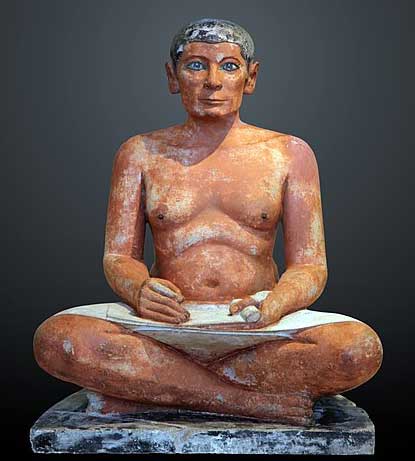This circa 1665 painting of the Annunciation by the relatively obscure Dutch genre painter Godfried Schalcken (1643 - 1706) gets something exactly right, that almost all other artists - including many far more famous than Schalcken - get wrong. Can you see what it is? 1/ 

Only in Schalcken's painting is the Virgin reading from a SCROLL, which would have been the correct book format at the time. The codex-form book shown in El Greco's and Titian's paintings didn't come into widespread use until at least two centuries later, from around AD 200. 5/ 





• • •
Missing some Tweet in this thread? You can try to
force a refresh























